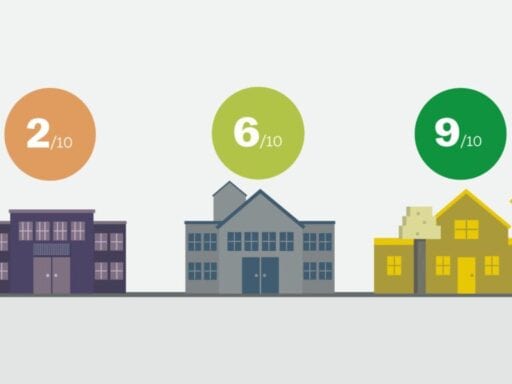GreatSchools is America’s unofficial school ratings website. We conducted a data analysis of their scores.
In America, most children go to school based on where their family lives. So affluent parents often take the quality of schools into consideration when they make housing decisions.
It can be hard to determine the quality of a school, though. Parents can use test scores as an indicator, or they can do their own research within their own social networks. But eventually they find data through Google or the real estate website Zillow. And there, they’ll almost certainly run into a website called GreatSchools.org.
And GreatSchools makes it easy: Almost every school in America is rated, 1 to 10. But what do these scores measure?
To find out, we collaborated with the education news website Chalkbeat. Chalkbeat reporters Matt Barnum and Gabrielle LaMarr LeMee found that these ratings correlate highly with socioeconomic levels — while not doing a great job at capturing how much a school helps students grow.
In their excellent piece, they explain:
But GreatSchools’ ratings effectively penalize schools that serve largely low-income students and those serving largely black and Hispanic students, generally giving them significantly lower ratings than schools serving more affluent, whiter student bodies, a Chalkbeat analysis found. …
The result is a ubiquitous, privately run school ratings system that is steering people toward whiter, more affluent schools.
To find out why, watch the video at the top of this piece and read Chalkbeat’s in-depth piece. And to keep up with Vox videos, subscribe to our YouTube channel.
More reading:
- GreatSchool’s ratings steer you toward whiter, more affluent schools — but not necessarily better ones. Chalkbeat’s Matt Barnum and Gabrielle LaMarr LeMee dig into the data and research for this in-depth feature.
- A few years ago, GreatSchools changed their ratings system, and EdWeek’s Sarah D. Sparks reports it was partially in response to advocates who were concerned about equity.
- This preliminary paper, by Sharique Hasan and Anuj Kumar, shows that the GreatSchools score might actually make segregation worse.
- Another study — by Peter Bergman, Eric Chan, and Adam Kapor — found that when GreatSchools scores were made available to families with housing vouchers, they chose neighborhoods with schools that had a tiny bit better GreatSchools rating. (It increased average school quality by a few tenths on their 1 to 10 rating scale.)
Author: Alvin Chang
Read More



